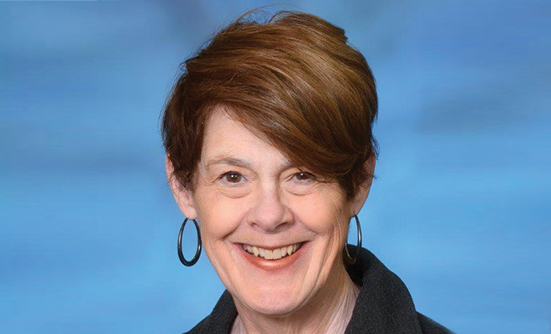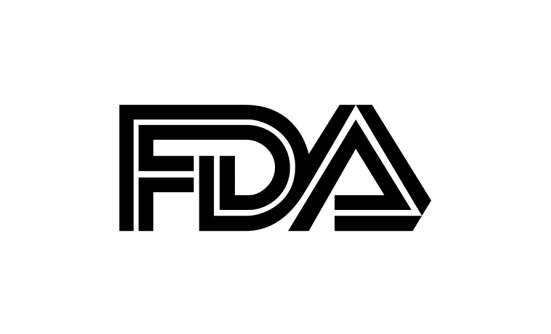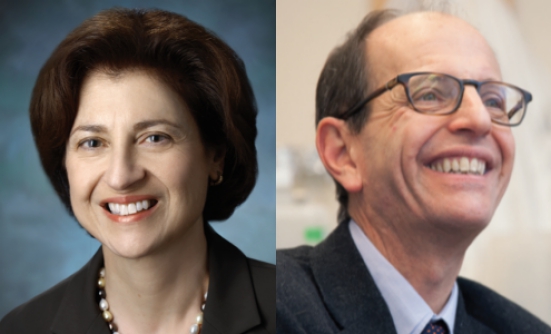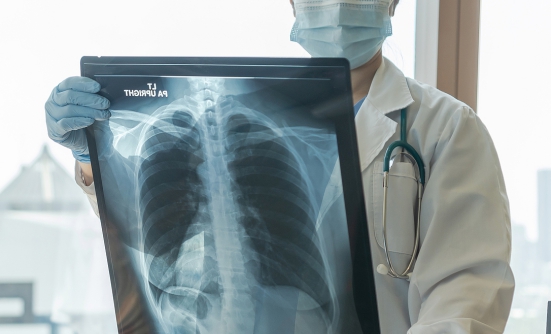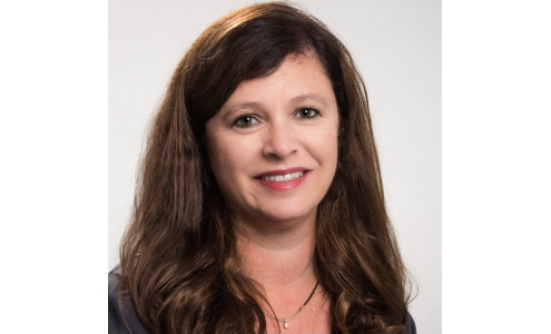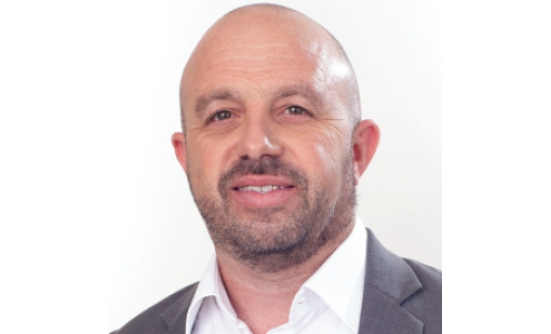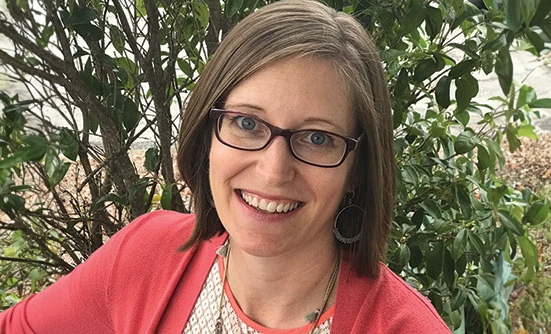When you think of lung cancer, what’s the first thing that comes to mind? Do you hesitate for just a second as you subconsciously pull up a vision of someone smoking a cigarette? Do you therefore feel a little less sympathy for someone with lung cancer than for someone with maybe breast cancer?
These are hard questions to face, and even harder questions to answer honestly. Although most people would deny that they have those thoughts, the stigma surrounding lung cancer is very real, as is the impact it has on patients.
Stigma is marked by feelings of shame, fear, and hopelessness, which are often felt when discussing lung cancer.
Our Common Biases
In 2012, I led a team of researchers in a study (published in 2015) that measured implicit biases related to lung cancer and breast cancer.1 More than 2,000 participants, including patients with cancer, caregivers, healthcare professionals, and others from the general population, answered questions to a test called an Implicit Association Test (IAT).1 As its name implies, the IAT measures implicit (unconscious) attitudes, which are automatically activated associations that are measured using a reaction-time tool, such as the IAT, and has been widely used in social psychology.
In the first part of the study, participants were asked direct questions about their thoughts regarding lung cancer. For example, they were asked to what degree they agreed or disagreed with statements such as, “Patients with lung cancer ought to feel hopeful.”
In the second part of the study, participants took the IAT. To measure existing attitudes toward lung cancer, participants were instructed to press keys to sort out quickly words and images into categories appearing on their computer screen. Participants were shown images associated with lung cancer or with breast cancer, along with negative words like “pessimistic” or positive words like “hope.” The reaction time each participant took to sort through every phrase was analyzed to provide insight about existing implicit attitudes toward each disease.
The responses showed that the time it took to respond to lung cancer and hopeful words was significantly longer than the time it took to respond to lung cancer and negative words. By contrast, the time it took to respond to breast cancer and hopeful words was significantly shorter than the time it took to respond to breast cancer and negative words, suggesting that it’s easier to associate lung cancer with shame than with hope, the opposite from breast cancer.
Because the tests were very fast, the differences were in milliseconds; however, these differences are what scientists call “statistically significant,” meaning that the difference is not by accident. We’ve always known that there is shame and embarrassment about lung cancer, and this test has given us a way to demonstrate these implicit biases by measuring them.
The Impact of Stigma
The Lung Cancer Project was founded in 2012 by Genentech and more than 20 advocate partners to identify, understand, and remove stigma and other barriers faced by people with lung cancer. According to the Lung Cancer Project, 75% of Americans have a negative bias toward lung cancer, 66% associate the disease with shame, and 75% with hopelessness. In addition to the negative way this makes a patient feel, the stigma about lung cancer can have a real impact on the treatment of patients.
One of the consequences of the stigma surrounding lung cancer is that it can take longer for patients to get the care they need after being diagnosed. Patients who feel and experience stigma are hesitant to take the first step toward treatment, because they often feel hopeless or are worried about how people will treat them. Some patients even think that they did this to themselves, so what’s the point of seeking treatment? They often don’t recognize that they started smoking when they were teenagers and very vulnerable to cigarette marketing, or that they started before the consequences of smoking were known, and by the time they wanted to quit, they were addicted and couldn’t.
Patients with cancer and the general public are not the only groups that experience this negative association.
One study showed that healthcare professionals may not be above this negative bias.2 In that study, primary care physicians were less likely to refer people with advanced lung cancer to a specialist than people with advanced breast cancer. The study authors concluded that there was a difference in referral patterns regarding the benefits of treatment for patients with lung cancer compared with those with breast cancer.2
Therefore, I urge everyone, but especially caregivers and healthcare professionals, to be mindful of using words that have stigma attached to them. Asking a patient about tobacco use can lead to feelings of shame for the patient. Finding a more empathetic way of asking difficult questions may lessen the stigma around lung cancer, specifically as it relates to smoking.
Smoking is highly addictive. The idea that people who smoke and then have lung cancer did it to themselves is not necessarily warranted. In the 1940s and 1950s, the government gave free cigarettes to servicemen fighting in World War II and in Korea. In the 1950s and 1960s, advertisements for tobacco companies heavily targeted women, and then in the 1980s and 1990s they targeted teenagers. With nicotine being so addictive, once you start smoking, it’s very hard to stop.
A Step in the Right Direction
In 2019 we repeated our earlier study using the IAT again,3 and I presented these new data at the 2019 World Conference on Lung Cancer. The results showed that the bias against lung cancer continues, but it has lessened over time, which is certainly encouraging.3 Prominent evidence suggests that implicit attitude changes are rare, which is why this observed reduction in scores is so noteworthy.
One of the reasons for this improvement in the attitude toward lung cancer could be that the treatment for lung cancer has come a long way in the past decade. Immunotherapies, which use the body’s own defenses (immune system) to fight cancer, and targeted therapies, which target cancer cells in great precision, have improved survival rates for lung cancer and have left many patients with a new sense of hope.
In addition, a push by patient advocates has also spread the word that lung cancer is not the death sentence it once was. Talking openly about the disease—with family members or through the media—can help to educate people about new treatments, which reduces the feelings of hopelessness surrounding lung cancer.
We are also seeing more patients speak out. It’s good for them to externalize their feelings and let the world know that they are angry at the stigma they face as patients with lung cancer.
Education and Advocacy
Although the decrease in stigma seen in our study is very encouraging, there is still much left to do. Educating patients, caregivers, the general public, and healthcare professionals will help to break the negative associations related to lung cancer.
In addition to breaking the stigma, speaking openly about lung cancer helps to educate the public about risk factors and symptoms associated with lung cancer, which we hope will lead to an early diagnosis for new patients.
Screening high-risk people
All people who are considered high-risk for lung cancer must be screened. Most women know the guidelines for when to get mammograms and at-risk women are screened frequently, often catching the disease before it worsens. Relatively few people, however, are getting screened for lung cancer, even though it has the potential to save as many lives as mammograms do for breast cancer.
The requirements for lung cancer screenings are very specific. People who should be screened for lung cancer are those between ages 55 and 80 who have what we call a 30-pack-year smoking history, meaning they have smoked 1 pack a day for 30 years, or 2 packs a day for 15 years and are still active smokers or have quit within the past 15 years.
Advocacy
Lung cancer is the second most common cancer in men and women, and it is the leading cause of cancer-related deaths. Yet, funding for lung cancer research is lacking in comparison to less stigmatized cancers. For example, the National Institutes of Health spends significantly more money on breast cancer research than on lung cancer, although the death rate for lung cancer is much higher than for other cancers.
Patients with lung cancer need to get mad about this and continue to advocate for more funding and research to improve lung cancer survival.
References
- Sriram N, Mills J, Lang E, et al. Attitudes and stereotypes in lung cancer versus breast cancer. PLoS One. 2015;10(12):e0145715.
- Wassenaar TR, Eickhoff JC, Jarzemsky DR, et al. Differences in primary care clinicians’ approach to non-small cell lung cancer patients compared with breast cancer. Journal of Thoracic Oncology. 2007;2(8):722-728.
- Schiller J, Kolkey H, Cox M, Smith CT. Changing Attitudes Regarding Lung Cancer: Shame, Embarrassment, and Hope. Presented at the 2019 World Conference on Lung Cancer; Barcelona, Spain.
Patient Resources
American Lung Association
https://www.lung.org/assets/documents/research/addressing-the-stigma-of-lung-cancer.pdf
Implicit Association Test
https://www.thelungcancerproject.org#behind-the-barriers
The Lung Cancer Project
https://www.thelungcancerproject.org





